It’s a major discovery for scientists in the search for alien life. Chinese researchers say they’ve found evidence of salt water on the surface of present-day Mars, potentially revealing the answer to whether life ever existed on the Red Planet.
The Chinese Zhurong rover uncovered evidence of salty liquid water droplets at low Martian altitudes on ancient dunes, millions of years old, offering clues about the planet’s past. Although calculations have previously suggested that water could exist on Mars today, this is the first time liquid water has been found on our neighboring planet.
According to the study’s lead author, Professor Xiaoguang Qin, this discovery could be crucial not only for understanding Mars’ evolutionary history but also for providing key insights in future searches for extraterrestrial life.
The Zhurong rover, part of China’s Tianwen-1 Mars exploration mission, landed on Mars in 2021 at a site on the southern edge of the Utopia Planitia plain, the largest impact basin in our solar system. Researchers used data from the rover’s cameras to study the surface features and material compositions of dunes within the landing area.
The study team identified significant morphological features on the dune surfaces, such as crusts, cracks, granulation, polygonal ridges, and strip-like traces. Analysis revealed that layers of the dune at or near the surface are rich in hydrated sulfates, hydrated silica, trivalent iron oxide minerals, and possibly chlorides.
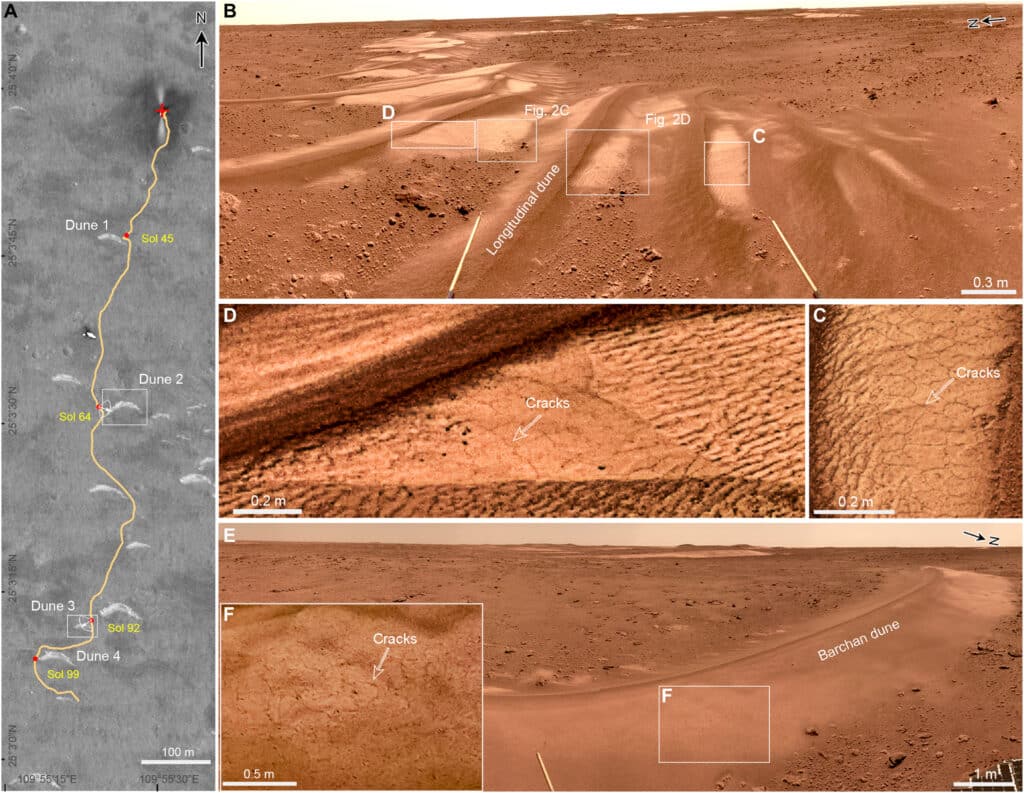
Prof. Qin, from the Institute of Geology and Geophysics (IGG) of the Chinese Academy of Sciences, said in a statement: “Based on the measured meteorological data from Zhurong and other Mars rovers, we inferred that these dune surface characteristics are related to the involvement of liquid saline water formed by the subsequent melting of frost or snow on the salt-containing dune surfaces when cooling occurs.”
The salts in these dunes, estimated to be between 0.4 and 1.4 million years old, cause frost or snow to melt at low temperatures, forming salty liquid water. Researchers discovered that when this water evaporates, the hydrated minerals cement sand particles to form sand aggregates and even crust, which subsequently cracks due to shrinkage.
The later frost and snow melting process further forms polygonal ridges and strip-like traces on the crust’s surface, experts said. The estimated age of the dunes and the relationship between these three phases of water suggest the transfer of water vapor from the polar ice sheet toward the equator during the final stages of Mars’ late Amazonian period.
This period, predicted to have begun around three billion years ago, led to repeated humid environments at low latitudes, researchers said. Consequently, a scenario of water activity has been proposed, in which cooling at low latitudes during Mars’ large obliquity stages prompts frost or snow to fall, scientists explained.
This process ultimately results in the formation of crusts and aggregates on the salty dune surface, solidifying the dunes and leaving traces of liquid saline water activity, according to the study.
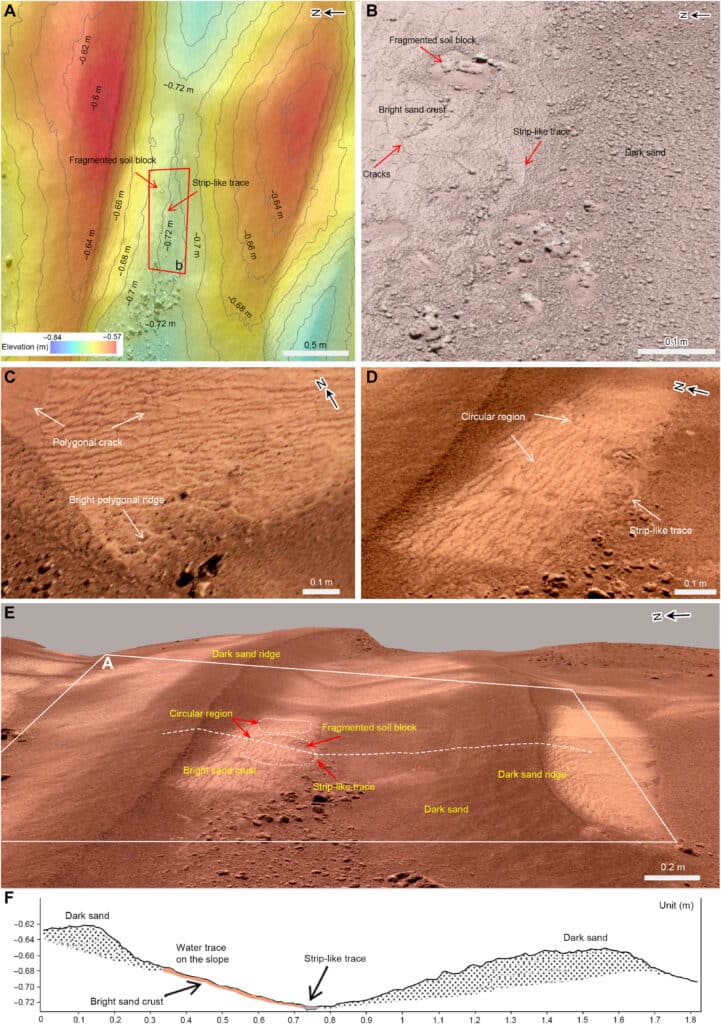
The IGG team hailed the discovery as providing key observational evidence of liquid water at Martian low latitudes, where surface temperatures are relatively warmer and more conducive to life than at high latitudes.
Regarding the significance of their team’s discovery, Prof. Qin said: “This is important for understanding the evolutionary history of the Martian climate, identifying a habitable environment, and providing key clues for the future search for life.”
The research is in the journal Science Advances.
South West News Service writer James Gamble contributed to this report.
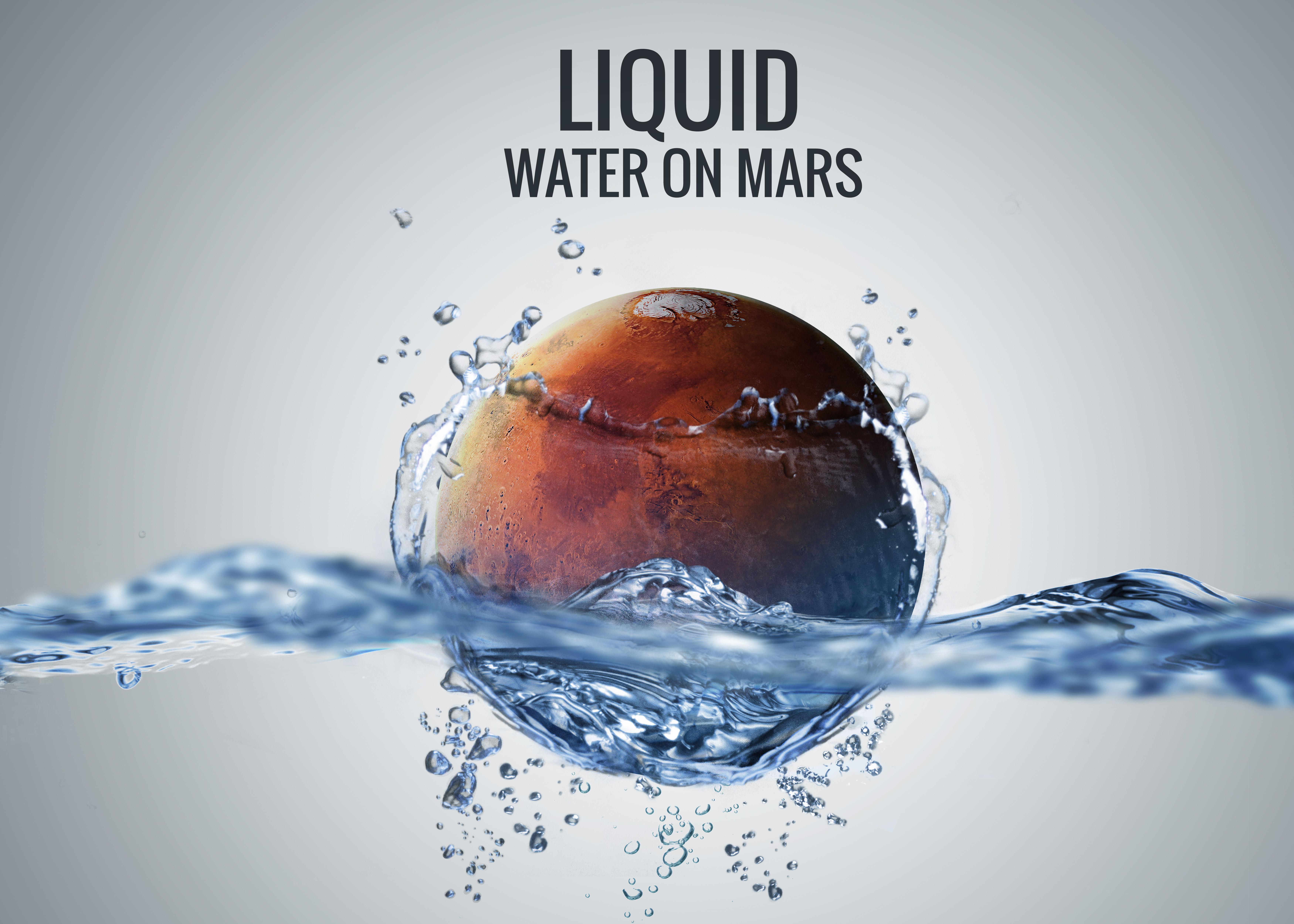

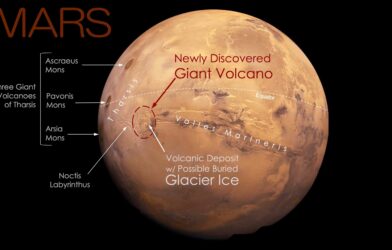

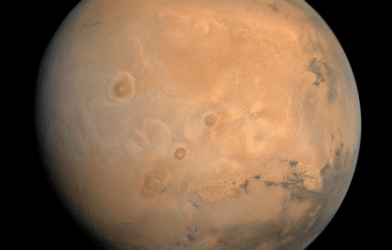

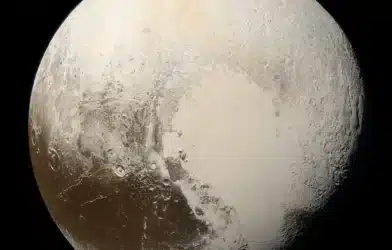


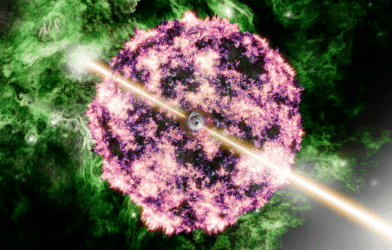
-392x250.png)

I wonder if this is like the fake moon landing in 60’s. More doubtful info.